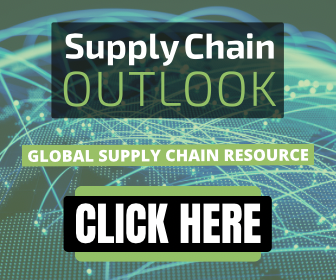Fraser Ironside, Director Business Consulting at Kinaxis, reflects on the challenges of the COVID-19 pandemic and the disruption caused by the ping of the NHS Covid app.
Written by Fraser Ironside, Director Business Consulting at Kinaxis
NAVIGATING THE SUPPLY CHAIN ‘PINGDEMIC’
At its height, the “pingdemic” caused significant disruption to UK supply chains as hundreds of thousands of employees self-isolated after being pinged by the NHS Covid app. Although its effects have been reduced by changes to policy and public health guidelines, it severely disrupted retail, food preparation and distribution and continues to be a problem in hospitality.
The disruption it generated was held partially responsible for an unexpected downturn in retail activity during July and led to some criticism of the government by business leaders concerned about the ability of key sectors such as logistics to continue operating effectively, leading to empty shelves.
Although the pingdemic arose from the unique circumstances of the coronavirus, it was only the latest in a continuum of disruptions to afflict UK supply chains. At times, these disruptions pile up close to one another to cause severe business aggravation. The pingdemic, for example, exacerbated HGV driver shortages that have existed in the UK since Brexit and the early days of the pandemic when many EU citizens with portable skills left the UK.
Globally, we can see this in the way the pandemic has led to microchip shortages which have in turn reduced production of a wide array of goods including gaming consoles and vehicles. Even shipping containers are in short supply or in the wrong ports, which has significant effect on the ability of carriers to maintain trans-oceanic trade flows.
The fiasco of the container vessel blocking the Suez Canal earlier this year only added to the sense that businesses are engaged in constant crisis-management and firefighting rather than strategic planning. Without the capabilities to increase their agility and build resilience into supply chains, many businesses bounce from one crisis to the next.
Yet as, is increasingly clear, crises are not the proverbial Black Swan events we like to imagine. Hurricanes, earthquakes, tsunamis and typhoons regularly afflict different parts of the world. Europe has experienced significant flooding, and wildfires frequently cause devastation across the globe. All these events are likely to become more common as a result of climate change. Political unrest regularly interrupts physical transport infrastructure, while trade friction, sanctions and sudden shifts in government policy add to the uncertainties of bear markets and crashes. Even in relatively placid times, a single interest rate decision by a central bank can have immediate consequences to which businesses must adapt.
All too often, businesses cannot respond swiftly and effectively because they lack the necessary supply chain transparency. Too much time is spent trying to work out what the latest disruption means on the ground, along with the priorities for communication. While every business wants to forecast demand as accurately as possible, successive disruptions have shown how extremely difficult this is.
The emphasis on forecasting can become a distraction from what is more important – designing the supply chain for greater agility and resilience. When crises erupt, organisations need a sense-and-respond capability so they can react rapidly and adjust operations as necessary to produce the best possible outcome. This gives businesses the confidence to face the future without having the near-impossible 99 percent accurate forecast.
Alongside this level of agility, organisations need to boost resilience by removing the potential single point of failure from supply chains, to dual or multiple-source suppliers or dispersed manufacturing or packing locations. Relying on a single distribution centre has, for example, become more obviously risk-laden since March 2020. Resilience is also not limited to geographical or physical diversity, it often requires more logistics partners to provide back up and alternatives when one route is blocked, a plant goes down or government embargoes suddenly bar companies from certain activities.
This may seem to add complexity and make the supply chain harder to manage and optimise in a disruption. Yet if a business with an extended supply chain has the technology to create and test meaningful resolution scenarios, it has viable alternatives at its fingertips, enabling it to surmount all kinds of eventualities, however complicated. The full range of cost impacts, service impacts and outcomes will be visible across a range of choices. Tough decisions are necessary in crises and those who make them benefit from seeing how the consequences play out.
Organisations can quickly work out how to maximise revenue, margin and cashflow, the last of which takes on takes on greater significance during a crisis such as the pandemic, when many businesses feared for their own survival. Businesses should be able to see immediately how much margin they will make if they follow a particular course of action. Making the right decision when these variables are fluctuating is obviously more likely if leaders have access to scenarios founded on the right data from along their entire supply chain.
It’s not the case that organisations should dispense with forecasting, which remains a necessity. What a succession of largely unforeseen events, crashes and disruption has taught us, is that businesses need to plan agility and resilience into their supply chains, because forecasting alone will not see them through. Starting from a position of resilience and having the ability to adapt quickly through data-driven scenarios will give them the best chance of optimising their responses so they emerge stronger and just as profitable from any disruption.



















